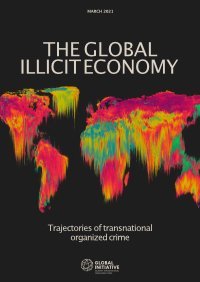By United Nations Office on Drugs and Crime
This report shows that the total value of illicit heroin and opium trafficked from Afghanistan to Western Europe through the Balkans amounts to some $28 billion every year. Sixty-five per cent of this total ($18 billion) is generated in Western and Central Europe. The four largest European markets for heroin - France, the United Kingdom, Germany, and Italy - account for nearly half of the gross profits, as the major heroin benefits are made by traffickers on the retail markets. The report shows that the total value generated by Afghan heroin and opium trafficked in Europe and through the Balkan route is one third bigger than the entire GDP of Afghanistan itself, which, in 2014, amounted to some $21 billion. Other findings indicate that the negative economic impact of heroin and opium are actually greater in Europe and the Balkan route countries than in Afghanistan itself. The report also shows the Islamic Republic of Iran and Turkey as the two countries which interject the greater percentage of heroin and opium destined for Europe. Iran seizes about 30 per cent of the 155 tons of heroin and opium entering its territory every year, while Turkey seizes 17 per cent. All other countries in Europe interject an average of 6 per cent of heroin in their territory. Data show that the impact of illicit profits in the national licit economy across countries is significant, with heroin and opium traffickers gaining between 0.2 to 2 per cent of their country's GDP. For some countries this share is bigger than the public expenditures dedicated to drug policies - if all drugs, and not only heroin and opium, are considered. The large amounts of money generated through this illicit activity can distort the licit national economies in the region.
Vienna: United Nations Office on Drugs and Crime, 2015. 92p.





















